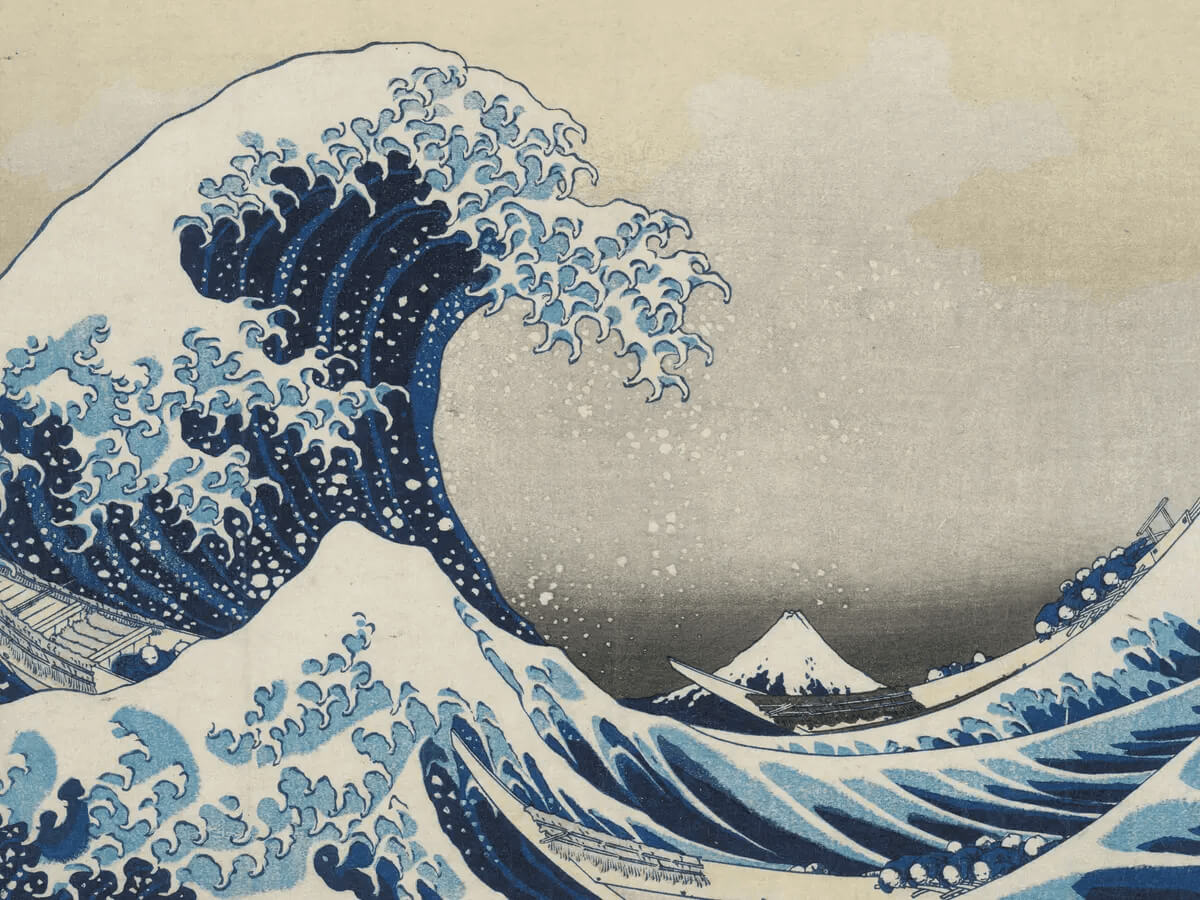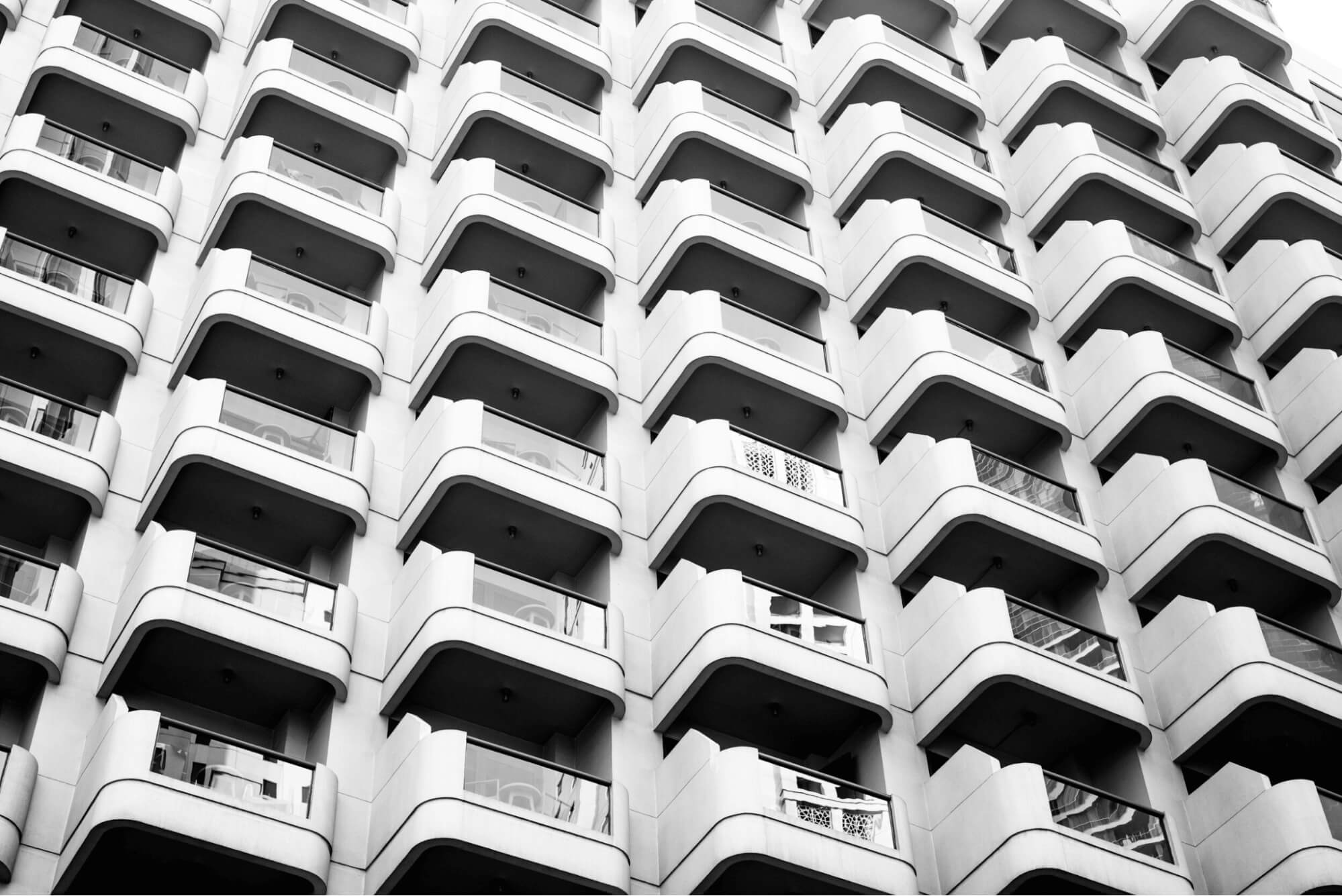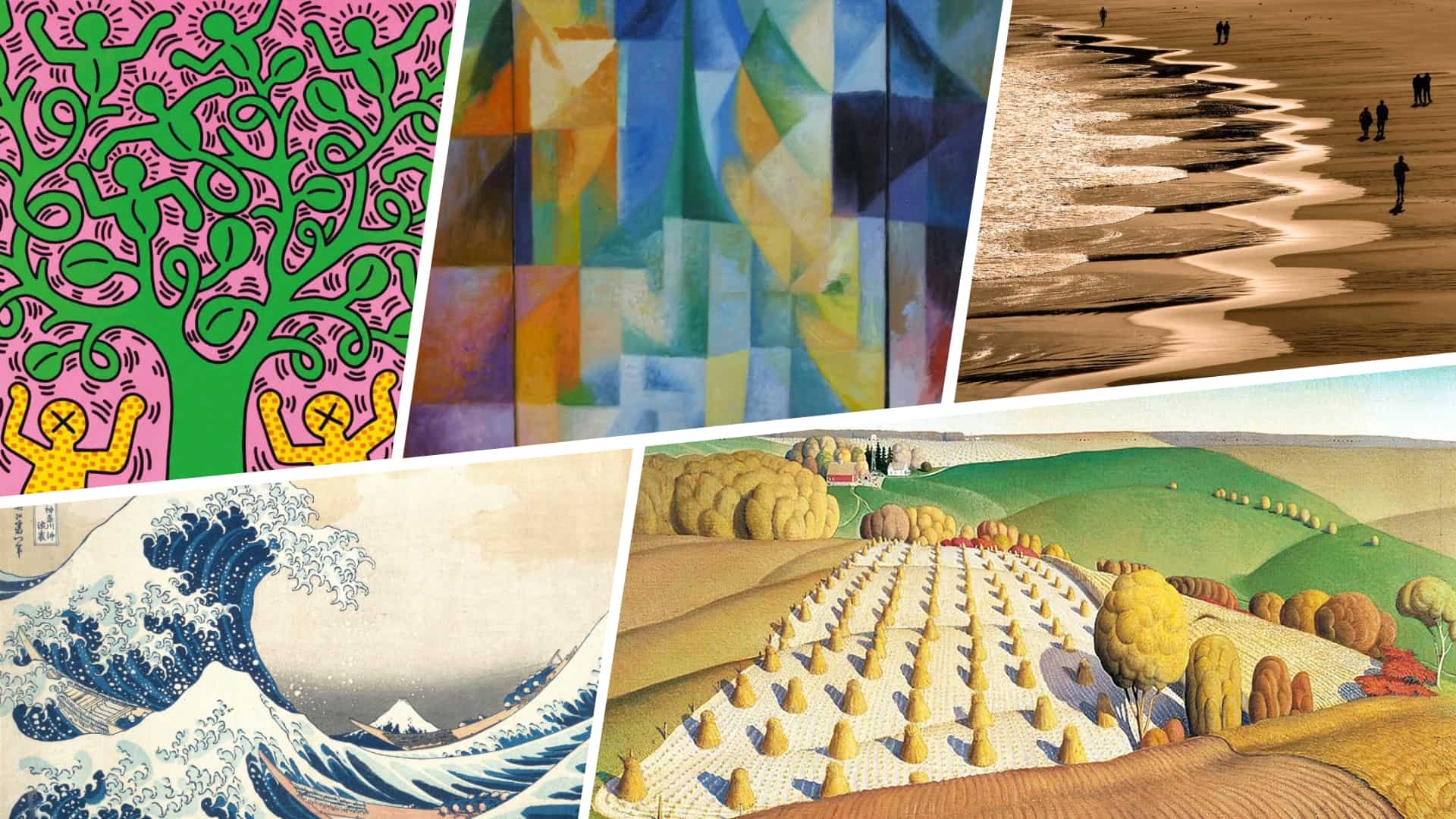Have you ever noticed how some artworks seem to move or flow? This is achieved through the use of rhythm. Rhythm in art is a powerful tool that can draw viewers into an artwork and create a sense of harmony and connection. In this article, we will explore the meaning of rhythm in art, how it can be achieved through visual and auditory elements, and provide some examples of its application. Join us as we take a closer look at rhythm in art.
What is Rhythm in Art
First, let’s define rhythm in art
Rhythm can be found throughout various mediums of art and art styles. While the way it appears may vary, the principle of rhythm can be defined. Let’s take a look at the rhythm art definition to understand this further.
RHYTHM ART DEFINITION
What is rhythm in art?
Rhythm in art is the visual or auditory pattern created by repeated shapes, elements, colors, sounds, and movements. It is used to create a sense of flow and connection within a work of art, as well as draw attention to certain areas of the composition. Rhythm can be achieved through repetition and variation, contrast, gradation and echo. By combining these techniques, an artist can create rhythm that helps to guide viewers through their artwork.
What is rhythm in art used for?
- Create a sense of movement and flow
- Draw attention to certain parts of the composition
- Create harmony and connection between elements
What Does Rhythm Mean in Art and Composition?
Types of Rhythm in Art
Rhythm is a fundamental concept in the field of art. It refers to the way in which an artwork is structured in terms of its visual elements such as colors, lines, shapes and patterns. In art, rhythm is the repetition and variation of these visual elements in a structured and deliberate manner.
There are five types of rhythm in art: regular rhythm, flowing rhythm, progressive rhythm, alternating rhythm, and random rhythm.
Each of these types of rhythm can be used to create a unique visual impact in artwork, and can be used to convey different emotions, moods, or messages to the viewer. Let’s take a closer look at each.
Regular Rhythm
Regular rhythm is a type of rhythm in which the elements in an artwork are arranged in a systematic and orderly way. This produces a sense of harmony and balance in the artwork.
An example of regular rhythm in art can be seen in the work of Dutch artist Piet Mondrian.
One of Mondrian's most famous works, "Composition II in Red, Blue, and Yellow," exemplifies the use of regular rhythm. The painting consists of a balanced arrangement of horizontal and vertical lines, and blocks of primary colors. The black lines and colors are repeated in a regular pattern, creating a sense of order and calm.

Composition II in Red, Blue, and Yellow • Piet Mondrian
Mondrian's paintings were characterized by a strict grid of primary colors (red, blue, and yellow) and straight black lines. The colors and lines were arranged in a consistent, geometric pattern throughout the entire canvas. This regular rhythm created a sense of order and balance, making the artwork pleasing to the eye.
Related Posts
Flowing Rhythm
Flowing rhythm is a type of rhythm in which the elements in an artwork are arranged in a way that creates a sense of movement and fluidity. This type of rhythm is often used to create a sense of movement or motion in a still image.
An example of flowing rhythm in art is the paintings of Vincent van Gogh. In his famous work "Starry Night," the swirling brushstrokes create a sense of movement and flow that draws the viewer's eye around the painting.

The Starry Night • Vincent van Gogh
The organic curves and repeated patterns in his paintings contribute to a sense of continuity and rhythm throughout his oeuvre. Another example is the Art Nouveau style, which often features sinuous, flowing lines and organic shapes inspired by nature. The works of artists like Alphonse Mucha and Hector Guimard exemplify this style's flowing rhythm, which often gives an impression of movement and vitality.
Progressive Rhythm
Progressive rhythm is a type of rhythm in which the elements in an artwork are arranged in a sequence that suggests a gradual increase or decrease in size, color, or texture. This type of rhythm creates a sense of progression, movement, or flow.
An example of progressive rhythm in art is the sculpture "Bird in Space" by Constantin Brancusi. In this work, the form of a bird is depicted through a series of simplified, abstract shapes that progressively become more streamlined and simplified.

Bird in Space by Constantin Brancusi
The sculpture creates a dynamic sense of movement and progression, as if the bird is soaring upward and transforming before our eyes. Another example of progressive rhythm in art is the painting "Composition VIII" by Wassily Kandinsky.
In this abstract work, the viewer's eye is drawn along a series of shapes and forms that continuously evolve and build upon each other. The painting creates a sense of movement and progression through the use of color, shape, and composition, leading the viewer on a visual journey through the work.
Alternating Rhythm
Alternating rhythm is a type of rhythm in which the elements in an artwork are arranged in a pattern that alternates between two or more contrasting elements. This type of rhythm creates a sense of contrast or tension in the artwork.
An example of alternating rhythm in art is the print "Campbell's Soup Cans" by Andy Warhol. In this work, the artist created a grid of 32 canvases, each depicting a different flavor of Campbell's soup.

Campbell's Soup Cans by Andy Warhol
The repetition of the soup can imagery creates a regular, predictable rhythm across each row and column. However, subtle variations in color and label design create an alternating rhythm that keeps the viewer engaged and interested.
Random Rhythm
Random rhythm is a type of rhythm in which the elements in an artwork are arranged in an unpredictable or spontaneous manner. This type of rhythm creates a sense of energy, excitement, or chaos in the artwork.
An example of random rhythm in art is the painting "No. 61 (Rust and Blue)" by Mark Rothko. In this work of abstract expressionism, the artist composed a series of rectangular shapes in various hues of blue and rust, arranged in a seemingly random configuration. The lack of a discernible pattern or structure creates a sense of unpredictability and randomness.

No. 61 (Rust and Blue) by Mark Rothko
Another example of random rhythm can be found in the work of Jackson Pollock, who famously used a drip painting technique in which he would fling paint across the canvas in a seemingly haphazard manner. This technique creates a sense of chaos and unpredictability that is characteristic of the random rhythm in his work.
Now that we’ve covered the types of rhythm that exist in art, let’s take a look at the techniques artists use to create rhythm in their own artworks.
Related Posts
Principles of Art Rhythm
Techniques used to create rhythm
There are various techniques used to create visual and auditory rhythm in art, depending on the artist's medium and style of expression. Let’s take a look at some of the fundamentals.
Repetition
Repetition is a key technique used to create rhythm in art. It involves creating similar elements within a piece of artwork either in terms of their content or composition. For example, repeating the same shape or color throughout a piece will create an underlying structure and pattern which can help to guide viewers through the work.

“Tree of Life” by Keith Haring • Art rhythm examples
Additionally, repeating elements such as a particular subject matter or visuals can draw attention to certain aspects of the artwork and emphasize its message. By creating repetition with both composition and content, artists can successfully create visual rhythms for viewers to appreciate.
Variation
The technique of variation is also used to create visual rhythm in art. This involves creating a degree of difference between elements within the work such as shape, size, color, or content. For example, varying the color of an object or changing its scale can provide contrast which gives the artwork movement and visual interest.

The Great Wave off Kanagawa • Katsushika Hokusai
Variation helps to draw viewers in and keeps them engaged with the piece. By combining repetition and variation within a work, artists can effectively balance order and chaos when creating a visual rhythm.
Contrast
Contrast is an important technique used to create rhythm in art. This involves using elements of difference within a piece of artwork, such as color, size, shape, or content. For example, juxtaposing light and dark colors or switching between large and small shapes can create a sense of movement which enables viewers to appreciate the interplay between components within the artwork.

Using contrast to create rhythm in art
By combining contrast with repetition and variation, artists can create visual rhythms that guide viewers through the work. Contrasting elements helps make the artwork visually interesting and engaging for viewers.
Graduation
Graduation is a technique that involves the gradual progression between elements such as color, size, or shape. This can help create smooth transitions between different parts of a work and give it a sense of flow.
Robert Delaunay's triptych, "Windows on the City," is an example of art that uses graduation as a technique to create rhythm. In this work, Delaunay combines bright colors and geometric shapes to create a shimmering effect.

Robert Delaunay's "Windows on the City" • Art rhythm examples
In the piece, he gradually transitions from one color to another and varies the size of his shapes in a way that creates movement and depth.
This allows viewers to take in the entire painting at once, while simultaneously experiencing its different components up close. The use of gradual transitions creates an aesthetically pleasing visual experience for onlookers.
Additionally, graduation helps create depth and perspective in artwork. By transitioning from one element to another gradually, the viewer is able to take in the entire piece without abrupt changes that may feel jarring or disorienting.
As we have seen, rhythm is an important concept in art. It is used to create a sense of movement, energy and flow in works of art. Rhythm can be found in any type of artwork, from paintings to sculptures and even music.
By understanding the principles of rhythm, artists can better create dynamic compositions that captivate and move their audience. Ultimately, the use of rhythm in art allows the artist to express themself and convey a message to their viewers.
Related Posts
Up Next
What is Scale in Art?
Scale is a technique used to create rhythm in art as we mentioned above. It can also be used to create emphasis and draw focus. Learn more about it in our next article.
Up Next: Example of Scale →
Showcase your vision with elegant shot lists and storyboards.
Create robust and customizable shot lists. Upload images to make storyboards and slideshows.
